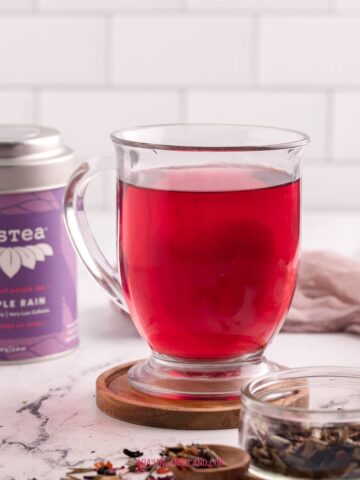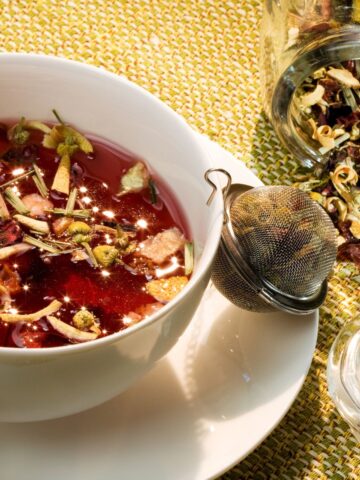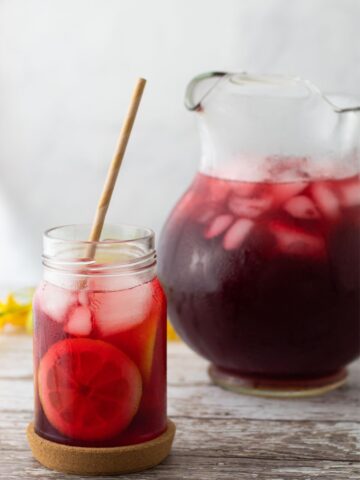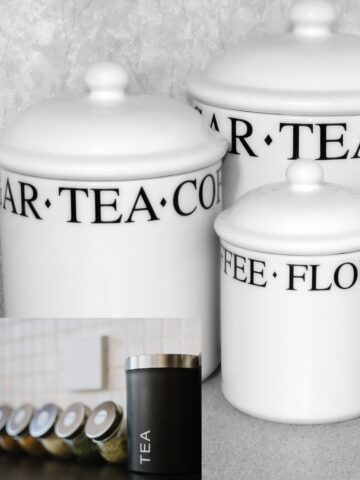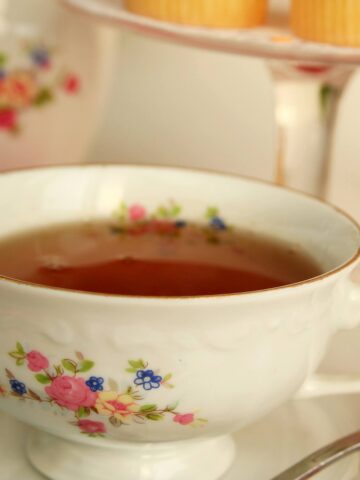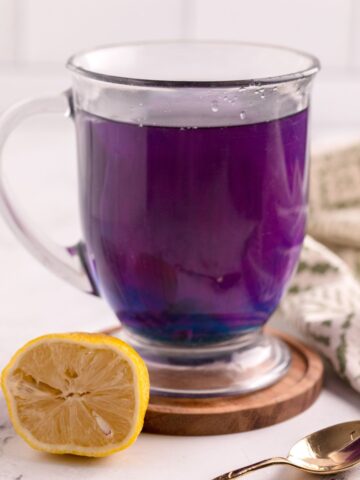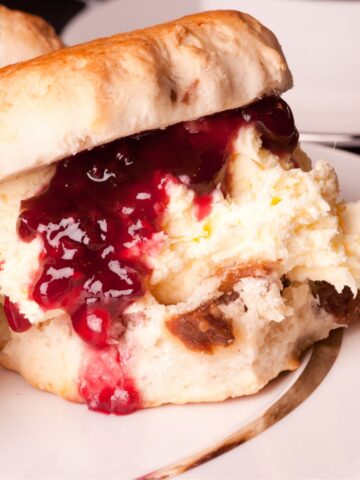Tea enthusiasts worldwide have long been fascinated with the unique flavors, different colors, and aromas of different teas. Two such teas that have gained immense popularity in recent years are Butterfly Pea Tea and Purple Tea. These color-changing tea options are just two of the most popular types of colorful teas.
While both have their distinctive tastes, brewing methods, and benefits, they differ significantly in several aspects. Here’s everything you need to know about Blue Tea vs. Purple Tea, which is deep purple.
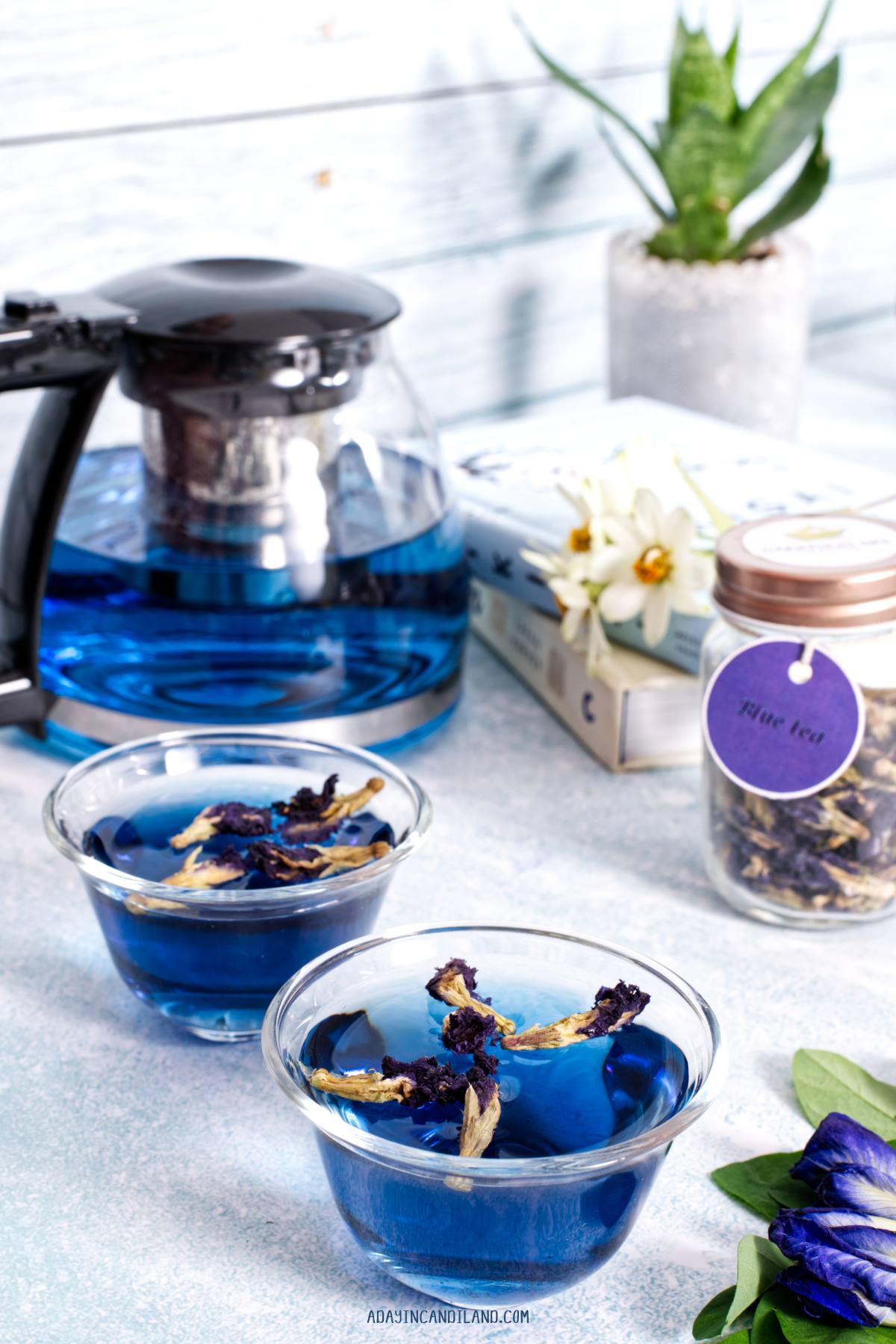
What is color-changing tea?
Color-changing teas have become increasingly popular among tea lovers due to their unique color-changing properties. As mentioned before, Butterfly Pea Tea and Purple Tea are two of the most popular color-changing teas on the market.
These teas change their hue when acidic ingredients like the addition of lemon juice or lime juice are added to them. This reaction is caused by the anthocyanin in the tea, which is a natural water-soluble pigment found in many plants.
Why Does The Tea Change Color?
Color-changing tea is a fascinating beverage that undergoes a captivating transformation based on pH levels. The tea typically contains natural ingredients like dried butterfly pea flowers, which impart a vibrant blue hue to the brew. However, when the tea interacts with acidic substances such as a splash of lemon juice, the pH level of the solution decreases, leading to a remarkable color shift from blue to purple or even pink.
This mesmerizing change is due to the anthocyanins present in the flowers, which are pH-sensitive compounds. As the pH becomes more acidic, as in the 4-6 pH range from the normal 8-10 pH, the anthocyanins exhibit varying shades, creating a visually dynamic and interactive experience for tea enthusiasts. The color can also turn into a pink or red color with the addition of Hibiscus Tea. The Color Changing Tea not only provides a delightful sensory experience but also serves as an engaging way to explore the principles of pH and chemical reactions in a culinary context.
What is Butterfly Pea Tea?
Butterfly Pea Tea, also known as blue pea flower tea, is an herbal infusion made from the “Clitoria ternatea” (also known as Asian pigeonwings) plant’s flowers. The tea has a deep blue color that turns purple when combined with acidic ingredients like lemon juice or lime juice.
Butterfly Pea Tea originated in Southeast Asia, particularly Thailand, where it is commonly consumed. The tea has a mild earthy flavor with sweet notes and a subtle aroma that resembles green tea.

Does there contain Caffeine in Butterfly Pea Flower Tea?
No, it is considered an herbal tea which makes it caffeine-free.
What is Purple Tea?
Purple tea is a type of black tea that originates from Kenya. The tea is made from purple-leaved cultivars of the Camellia sinensis plant, which gives the tea its distinct purplish hue. Unlike most black teas, Purple tea has a milder taste, akin to green tea, with a slight floral note. The tea is also known for its high levels of anthocyanin, a potent antioxidant that gives the tea its deep violet unique color.
Both Butterfly Pea Tea and Purple Tea have unique properties, in addition to the color change that makes them stand out among other teas. While both offer a variety of health benefits, such as antioxidants and anti-inflammatory compounds, they differ significantly in their brewing methods and flavor profiles.
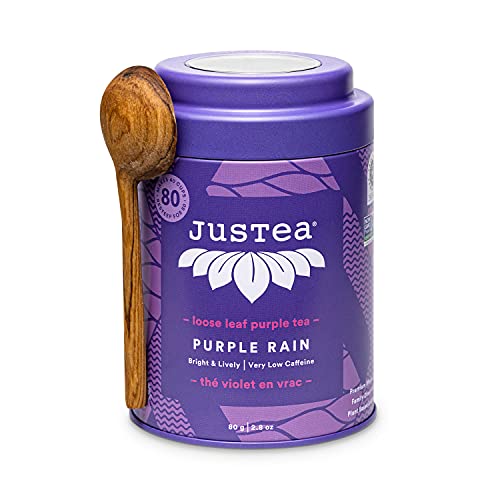
Cultivation and Benefits
Butterfly Pea Tea and Purple Tea originate from different regions and require different cultivation methods. The Butterfly Pea plant grows well in tropical climates, while Purple tea is predominantly grown in Kenya’s high-altitude regions.
Both color-changing teas are known for their numerous health benefits. Butterfly Pea is known to improve brain function, reduce anxiety, and boost the immune system. On the other hand, Purple tea is rich in antioxidants and has been shown to lower blood sugar levels, aid in weight loss, and improve digestion.
Taste, Aroma, and Brewing Methods
The taste and aroma of Butterfly Pea Tea and Purple Tea differ significantly. While Butterfly Pea Tea has a mild earthy flavor, Purple Tea has a milder taste with floral notes.
Butterfly Pea Tea can be brewed as a hot tea or iced tea, while Purple tea is best brewed using hot water. Both teas’ brewing methods require steeping for about 3-5 minutes, depending on the desired strength.
Related Recipes:

Popularity and Cultural Significance
Butterfly Pea Tea has been a popular beverage in Southeast Asia for centuries and is commonly consumed in Thailand, Vietnam, and Malaysia. In recent years, this tea has gained immense popularity worldwide, thanks to its stunning blue color, unique taste, and numerous health benefits.
Purple tea, on the other hand, is relatively new to the tea scene and has gained popularity in recent years due to its high antioxidant content and unique flavor profile.
Both Butterfly Pea Tea and Purple Tea have their unique qualities, tastes, and benefits. While Butterfly Pea Tea is known for its striking blue color and mild earthy flavor, Purple Tea is renowned for its high levels of antioxidants and delicate floral notes.
Ultimately, the choice between the two color-changing teas depends on your personal preferences, tastes, and needs. Whether you choose Butterfly Pea Tea or Purple Tea, you’re sure to enjoy a delicious and healthy cup of tea that will leave you feeling rejuvenated and refreshed. Not to mention the gorgeous colors that will surely leave you captivated!
What other recipes can you make with color-changing tea?
Color Changing Tea, with its natural colorant and captivating transformation, can be used in various creative recipes. Here are a few ideas:
- Color-Changing Lemonade: Mix Color Changing Tea with lemonade for a visually stunning and refreshing drink. As you squeeze a lemon into the tea, watch the colors shift from blue to purple or pink, adding a fun element to your lemonade. Add a few lemon slices and watch the color change increase.
- Ice Cubes or Popsicles: Freeze Color Changing Tea into ice cubes or use it to make popsicles. As the ice melts or you take a bite, the color-changing effect will be a delightful surprise. Add a few of the flower petals into the ice cubes or popsicles for a fun visual treat.
- Mocktails and Cocktails: Incorporate Color Changing Tea into mocktails or butterfly pea cocktails for a unique and Instagram-worthy beverage. Experiment with different mixers and garnishes to create visually appealing and flavorful drinks such as an Arnold Palmer, tea infusion, or Blue Matcha Latte.
- Fruit Infusions: Combine Color Changing Tea with various fruits to create a visually appealing and tasty fruit infusion. Add berries or citrus fruits to enhance both the flavor and the color-changing effect.
- Colorful Sorbet or Granita: Use Color Changing Tea as a base for sorbet or granita. The frozen dessert will not only taste refreshing but also showcase the captivating color transition when served.
- Color-Changing Smoothies: Blend Color Changing Tea with fruits, yogurt, and ice to create vibrant and healthy smoothies. The color shift will add an extra element of excitement to your morning routine.
- Jellies or Gelatin Desserts: Incorporate Color Changing Tea into gelatin desserts or jellies for a playful and visually appealing treat. Serve them chilled to accentuate the color transformation.
Remember to experiment with quantities and additional ingredients to tailor these recipes to your taste preferences. The key is to enjoy the dynamic and colorful experience that Color Changing Tea brings to your culinary creations.



